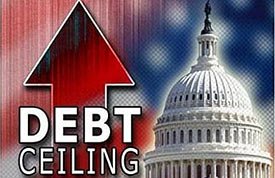The bullion markets offer their own commentary about conservatives’ state of mind since Donald Trump’s election. They are optimistic for the first time in years. Just look at the sales statistics from the U.S. Mint. Bullion coin sales have fallen sharply as investors see less reason to seek safe haven in the form of physical metal.
During Obama’s presidency, and during the campaign when it looked as if Hillary might succeed him, conservatives and libertarians aggressively bought American Eagle coins and other bullion products. The mint set new sales records nearly every year.
The mindset that drove the retail buying changed in November. Consider the February sales figures. Sales of gold American Eagles dropped 67.1% last month versus the same month in 2016. Silver American Eagle sales fell by 74.6%.
Now one month of data from the mint certainly cannot be used to extrapolate longer term trends. Mint statistics often vary wildly from one month to the next. But it is safe to say retail bullion demand is down significantly, and the shift seems primarily driven by optimism surrounding the Trump economy.

There is little else to put investors at ease. The European Union remains in crisis. Geopolitical turmoil still dominates the Middle East. Federal debt and deficits look certain to persist.
The rhetoric from the Federal Reserve hasn’t changed in years. Officials there are still telegraphing “gradual” rate hikes with the caveat that rates will likely stay well below historical averages indefinitely.
But the U.S. retail market is only a small part of global demand. And demand for the precious metals from financial market participants as well as well as Asian buyers continues to be relatively strong with prices rising sharply since December. But the recent dip in demand among American retail buyers may represent a final capitulation before the ferocious global bull market resumes.
The rhetoric from the Federal Reserve hasn’t changed in years. Officials there are still telegraphing “gradual” rate hikes with the caveat that rates will likely stay well below historical averages indefinitely.









Leave A Comment